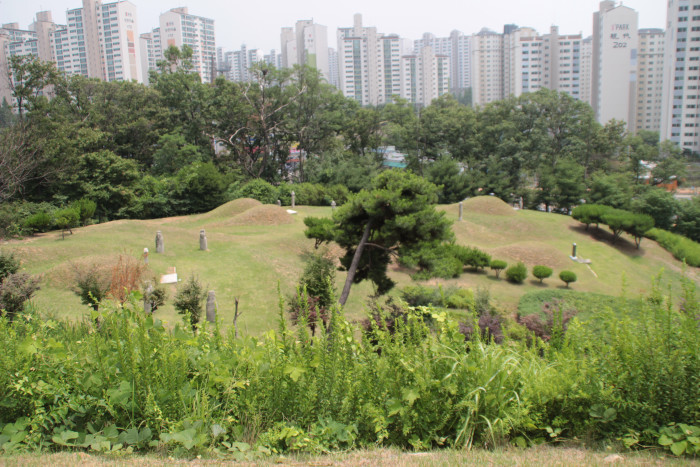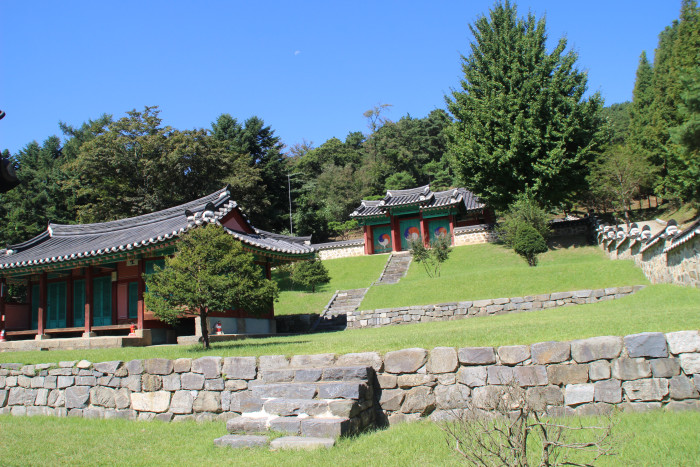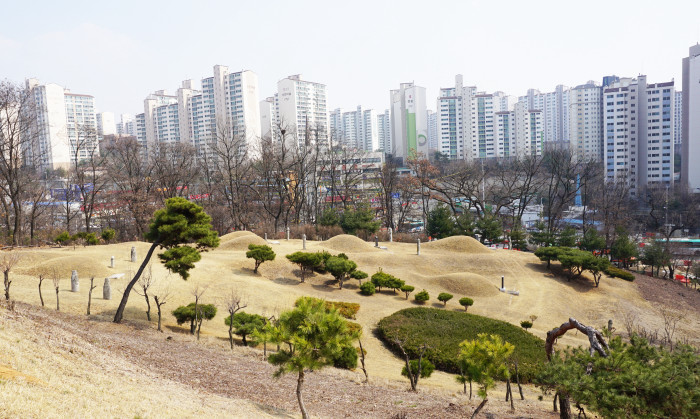경기문화재단
Yongin_“Yongin, Home of the Dead,” Is Alive
The Spirit of the Dead that the Living Should Mind
Kim Hak-min (Food columnist)
There is an old story about Yongin of Gyeonggi-do and Jincheon of Chungcheongbuk-do. The story goes: The King of the Underworld sent his messenger to escort the spirit of someone who was dying in Yongin to his kingdom but the messenger mistakenly brought the spirit of a different person of the same name who had died in Jincheon. The king was shocked, and returned the spirit to its body in Jincheon. Unfortunately, his funeral had finished long before his return and his body has started to decompose. The king had no choice but to put the Jincheon spirit to the body of a Yongin man who had just died. The story of the Jincheon man who lived additional life in the body of a dead man in Yongin is from which the saying, “Jincheon is home of the living and Yongin for the dead” originated.
This legend exerted an influence upon the Korean pungsu (or feng shui) tradition, resulting in the folk belief that Jincheon is a good place to live while Yongin an auspicious place for the dead to be buried. Today, not many believe that Jincheon is the best place for people to live in Korea but Yongin has long remained as one of the most favored places for the burial of the dead, largely because it is easily accessible from Seoul and has gentler terrain and more fertile land than its neighboring areas. The pungsu principle that “the ancestor’s grave located at an auspicious site blessed his or her descendants with good fortune” created cemeteries of multiple number of influential clans such as Yongin Yi Clan, Haeju Oh Clan, Yeongil Jeong Clan, and Gyeongju Kim Clan. Even today, when the influence of pungsu is much less than it once was, families of wealth and political influence still prefer to have their family cemetery in Yongin.


Death is certainly the extinction of the finite body of an individual being, but it can leave behind an infinite spiritual legacy which becomes a valuable lesson for future generations, according to the life before his or her death. Of many old great sages whose spirits are now lying in eternal peace at their burials built in Yongin, some lost their lives for their loyalty and faithfulness to the country while others for their devotion to the improvement of the people’s lives through reformation of the feudal political and social systems. In Europe, there are tour programs for the historical cemeteries that have peculiar epitaphs and monuments that are great works of art. If you can admit the significance of the belief that Yongin is the Korea’s most auspicious place for the dead to “reside in”, visiting the graves of these famous historic figures scattered around the city would make a great tour program.
There is in San 55-1, Sanghyeon-dong of Suji-gu, Yongin, for instance, the grave of Jo Gwang-jo (courtesy name: Jeongam, 1482-1519), a reformist Confucian scholar-official of early Joseon (1392-1910) who enthusiastically advocated the politics based on Neo-Confucianism and implemented various reform plans which resulted in extreme backlash from the conservatives and his fall from power and eventual execution. There stands in the grave precincts a stone stele (Gyeonggi-do Monument No. 169) bearing the inscription honoring the Jo’s life and achievements whose text was written by No Su-sin and calligraphed by Yi San-hae. Also, Simgokseowon (Gyeonggi-do Tangible Cultural Heritage No. 7), the Confucian shrine-academy dedicated to the great statesman, is located about 300 meters away from the grave.
Another grave of historical importance located in Yongin (address: San 36, Mabuk-dong, Giheung-gu) is that of Min Young-hwan (posthumous honorary title: Chungjeonggong, 1861-1905), a patriotic high-ranking official who killed himself as an expression of resistance against the Eulsa Treaty of 1905 signed under coercion from Imperial Japan which used it to take the diplomatic sovereignty of the Korean Empire (1897-1910). His original grave located in Towol-ri of Suji-myeon had been in destitute condition even without proper mound until 1942 when their descendants moved it to the current location.


The grave of Jeong Mong-ju (pen-name: Poeun, 1337-92), a great Confucian scholar and revered politician of late Goryeo (918-1392), is also in Yongin (address: San 3, Neungwon-ri, Mohyeon-myeon). Killed by an assassin sent by Yi Bang-won (later King Taejong, the third ruler of Joseon) at the stone bridge called Seonjukgyo in Gaeseong, he is now widely regarded as a symbol of loyalty for his desperate efforts to protect the failing Goryeo dynasty. There is beside the grave (Gyeonggi-do Monument No. 1) Chungnyeolseowon (Gyeonggi-do Tangible Cultural Heritage No. 9), the Confucian shrine-academy established to honor the academic achievements he made as one of the first proponents of Neo-Confucianism in Korea.
There is in San 5, Yeokbuk-dong of Cheoin-gu the grave of Chae Je-gong (pen-name: Beonam, 1720-1799), a renowned Confucian scholar and reformist politician who played a key role in the reformation efforts initiated by King Jeongjo (r. 1776-1800). His grave (Gyeonggi-do Monument No. 17) is accompanied by the memorial stele called Noemunbi (Gyeonggi-do Tangible Cultural Heritage No. 76) which bears a eulogy written to honor him by King Jeongjo. Other graves of renowned historic figures located in Yongin include that of Yu Hyeong-won (pen-name: Bangye, 1622-1673) who as a pioneer of the Practical Learning (Silhak) developed to get over the limitations of traditional Neo-Confucianism dreamed a full-scale political and social reform for Joseon. The address of the grave (Gyeonggi-do Monument No. 32) is San 25-1, Seokcheon-ri, Baegam-myeon, Yongin.
<ggc의 모든 콘텐츠는 저작권법의 보호를 받습니다.>